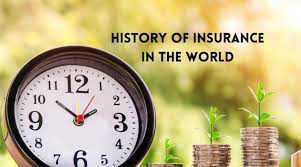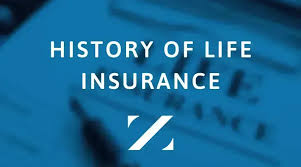Insurance in some structures is as old as a society with a long history. It is said that between 4000-3000 BC, Babylonian shippers received the so-called bottom-level contract in time. Bottomry was also adopted by Hindus in 600 BC, and it must have been earlier than the fourth century BC in ancient Greece. Under the underlying contract, the supplier is allowed to provide credit for an arrangement assuming that the goods are drifting somewhere in the middle of the ocean. The prepayment does not need to be refunded. The credit interest covers the protection risk.
Ancient Roman law believes that an understanding clause is formulated in the underlying contract, and the contract saves reserves through cash converters. Marine investment has been profoundly developed in the 15th century. In Rome, additional burial society orders paid for their personal funeral services in addition to their monthly duties. Protection contracts have also grown ahead of schedule. It is widely known in ancient Greece and other maritime countries that do business with Greece.

The Great Fire of London in 1666 triggered fire protection. In late 1711, during the presumed airbag period, various insurance agencies were started in England. Quite a few of them are false and simple money scams, which mainly involve providing protection to ordinary people. Two important and effective British insurance institutions were established during this period-the London Insurance Company and the Royal Exchange Insurance Company. Their activities marked the beginning of modern property and risk protection.
Without reference to Lloyd's of London, the global protection market, no one would have completed any talk about the improvement of early protection in Europe. It began in the 17th century as a coffee shop devalued by vendors, financiers, and protection guarantors, and it continues to be seen as the most likely place to trace marine protection guarantors. Edward Lloyd provides his clients with transportation data collected from terminals and different sources; this, in the long run, has evolved into the issuance of Lloyd's lists, and still exists. Lloyd’s was redesigned in 1769 as a traditional gathering of financiers who tolerated marine dangers. (The word financier is said to come from the act of asking every brave person to write his name under the total risk he was prepared to admit at a predetermined premium.) With the development of British maritime power, Lloyd became the dominant maritime hazard The guarantor was subsequently added to fires and other property changes. Today, Lloyd’s is an important reinsurance company, just like an indispensable safety net provider, but it does not perform the protection business itself; this is done by some guarantors who recognize their own protection and assume mutual responsibility All the dangers of competition.

Benjamin Franklin named the major insurance institution in the United States as the Philadelphia Donor Institution in 1752. The main additional security organization in the provinces of the United States is the Presbyterian Ministerial Fund, which was coordinated and established in 1759. By 1820, there were 17 equity life insurance organizations in New York Province alone. A large number of early property insurance institutions failed due to theoretical risks, incompetent management, and incomplete funding frameworks. Others later failed in the Chicago fire in 1871 and the San Francisco earthquake and fire in 1906. There are few guidelines for success, and setting interest rates without useful insights for improvement is troublesome. Many problems also plague the additional security business. In the period after the American war, people created terrible practices: publicizing unearned profits, under-holding, distorted propaganda claims, and setting up business premises sometimes cost more than all the resources of the United States. organization. 33 life insurance organizations failed somewhere between 1870 and 1872, and another 48 failed somewhere between 1873 and 1877.
In late 1910, additional security guarantees participated in the continued development of the United States. The annual development rate of power protection from 1910 to 90 was about 8.4%-an increase of 626 creases in the 80-year time frame. To a certain extent, there is a more modest increase in the protection of property obligations. By 1989, approximately 3,800 property risk organizations and 2,270 disaster protection organizations were ready, using nearly 2,000,000 labor. In 1987, the U.S. safety net provider stated 37% of all charges worldwide.
Similarly, the social order of the tombs in Rome paid for their personal memorial service from their monthly donations.
Protection contracts have also grown ahead of schedule. It is widely known in ancient Greece and other maritime countries that do business with Greece.
The Great Fire of London in 1666 triggered fire protection. Later in 1711, during the so-called bubble period, various insurance institutions were established in Britain. A lot of them are false, and MLM is mainly to provide protection to the entire society. During this period, two important and effective British insurance institutions were formed-the London Insurance Company and the Royal Exchange Insurance Company. Their activities marked the beginning of current property and risk protection.







